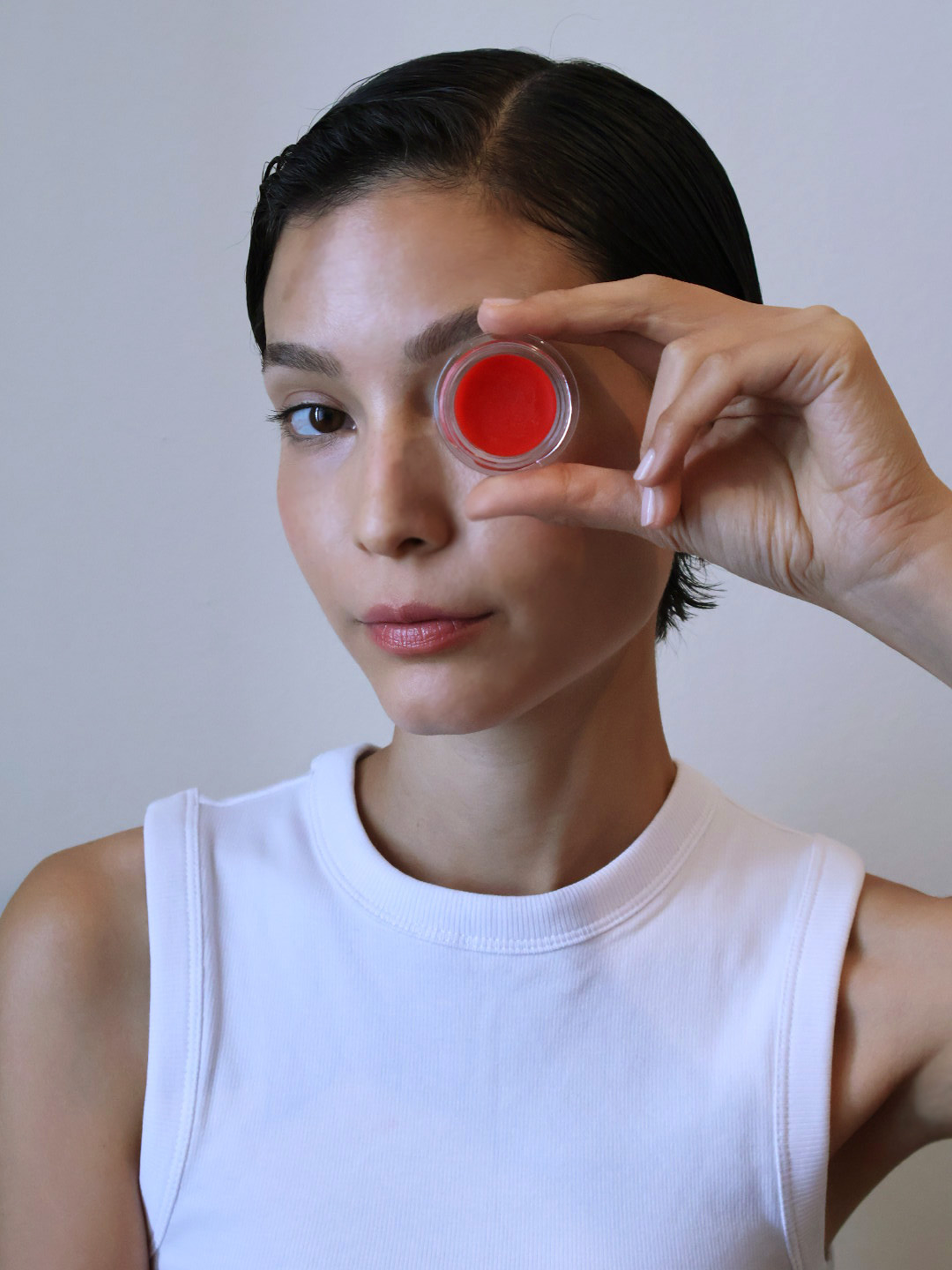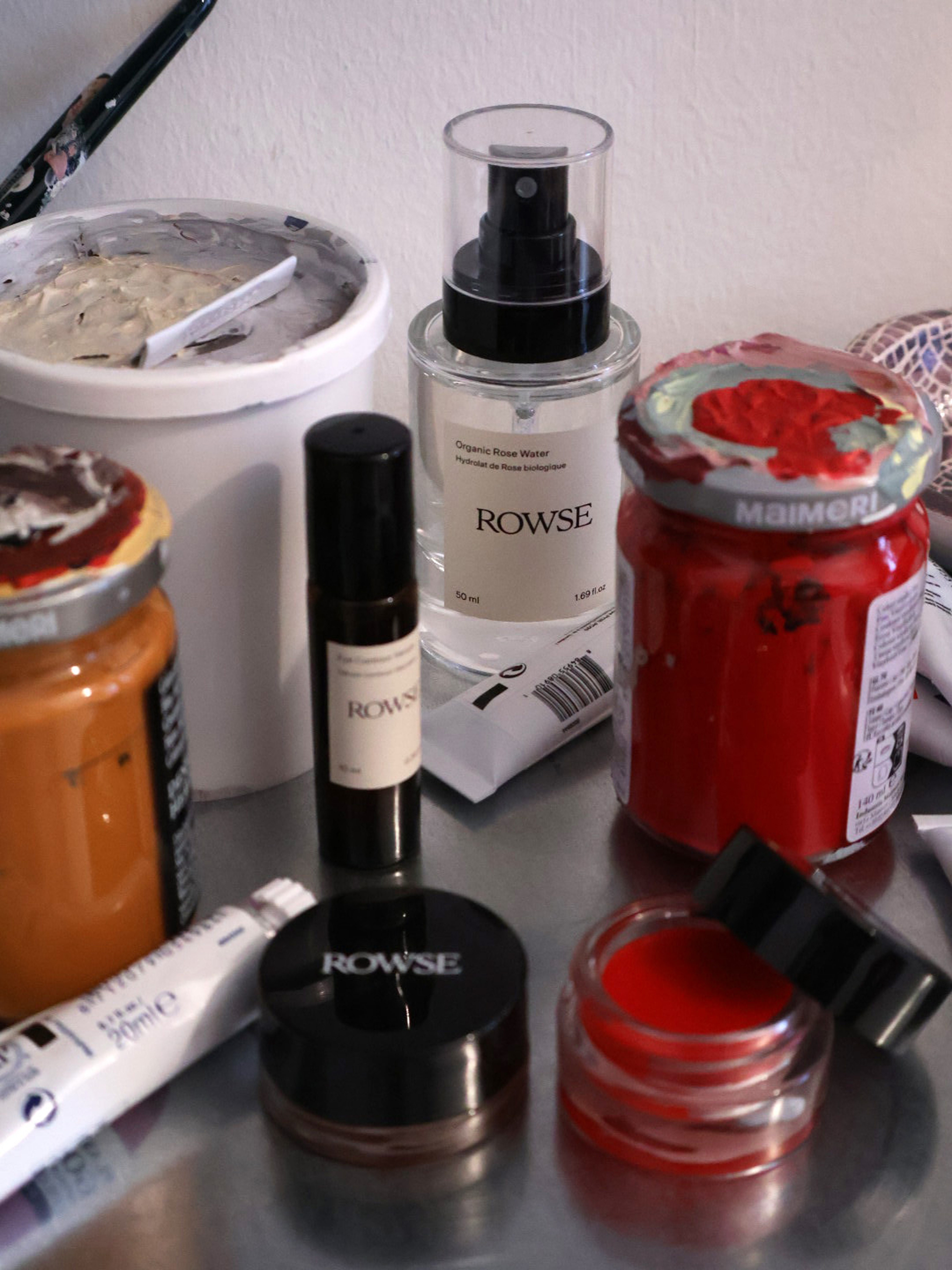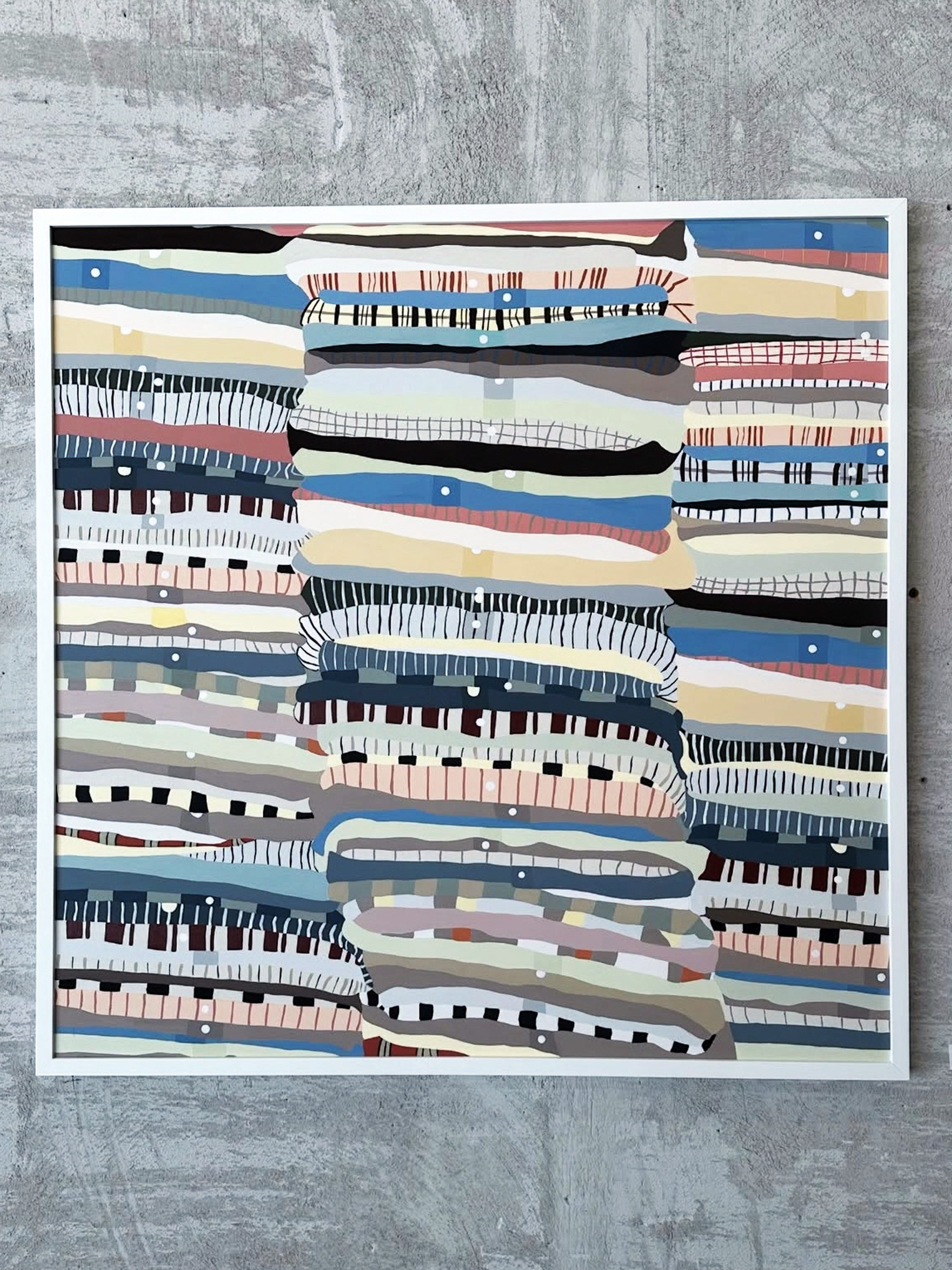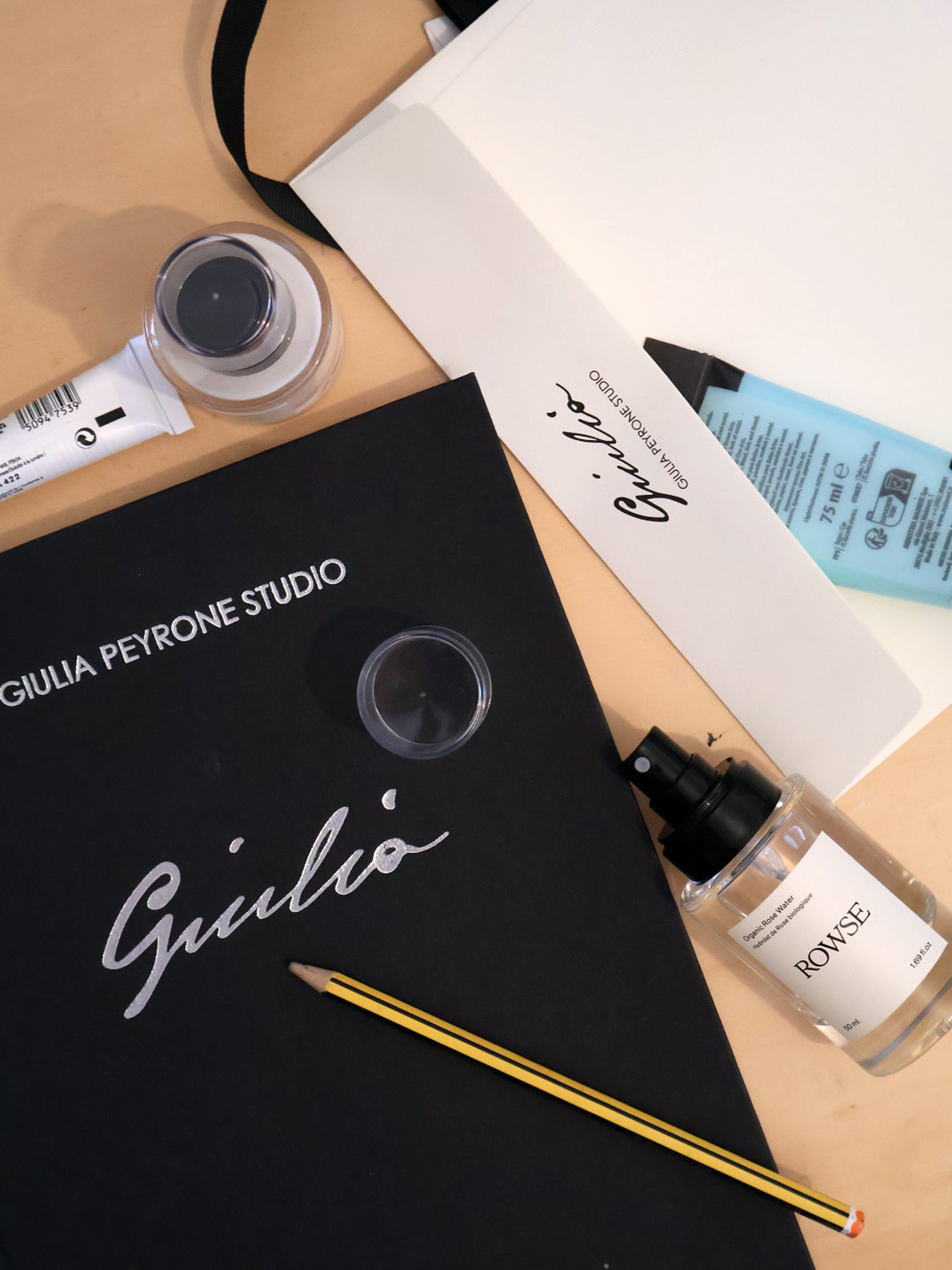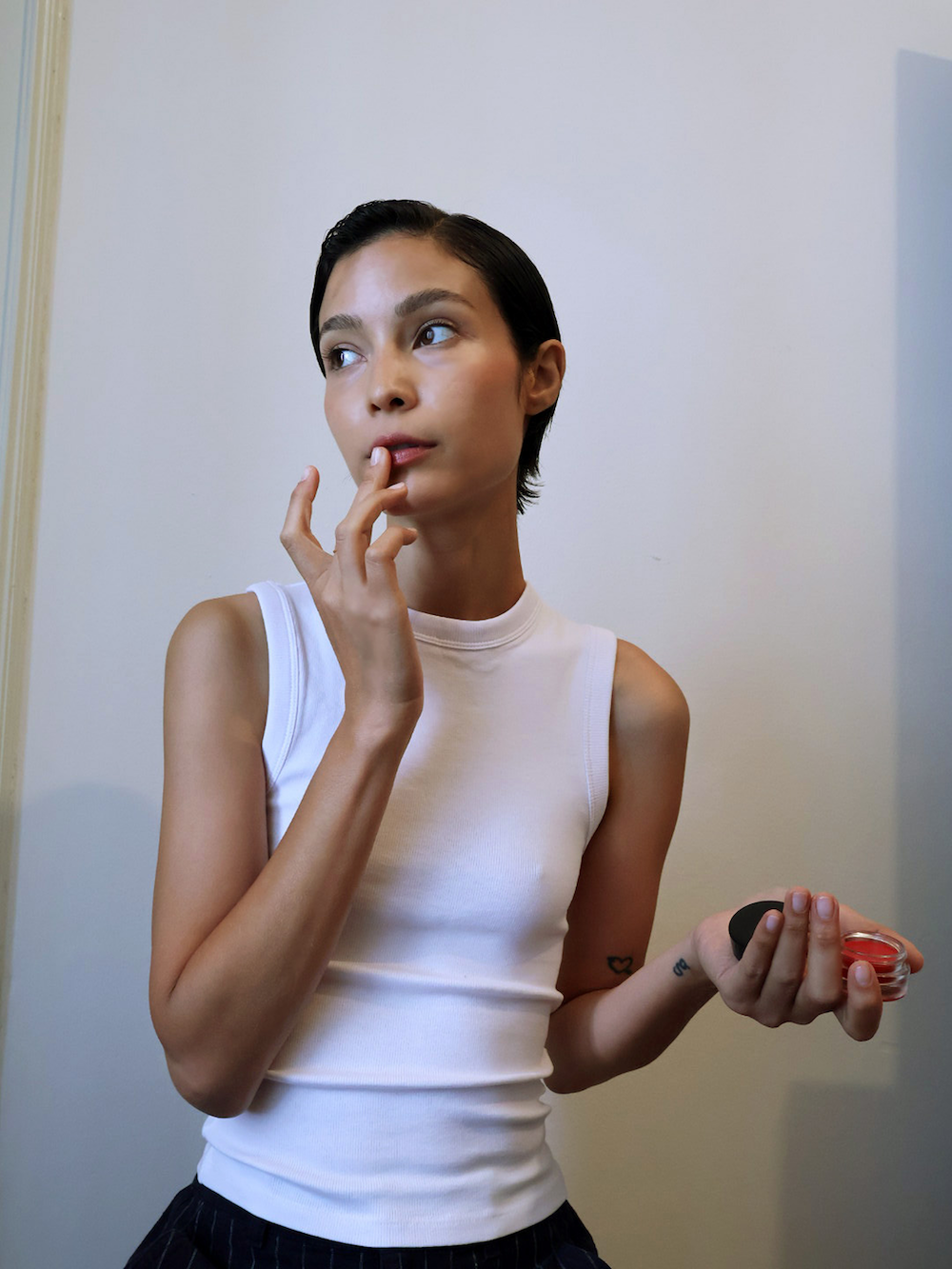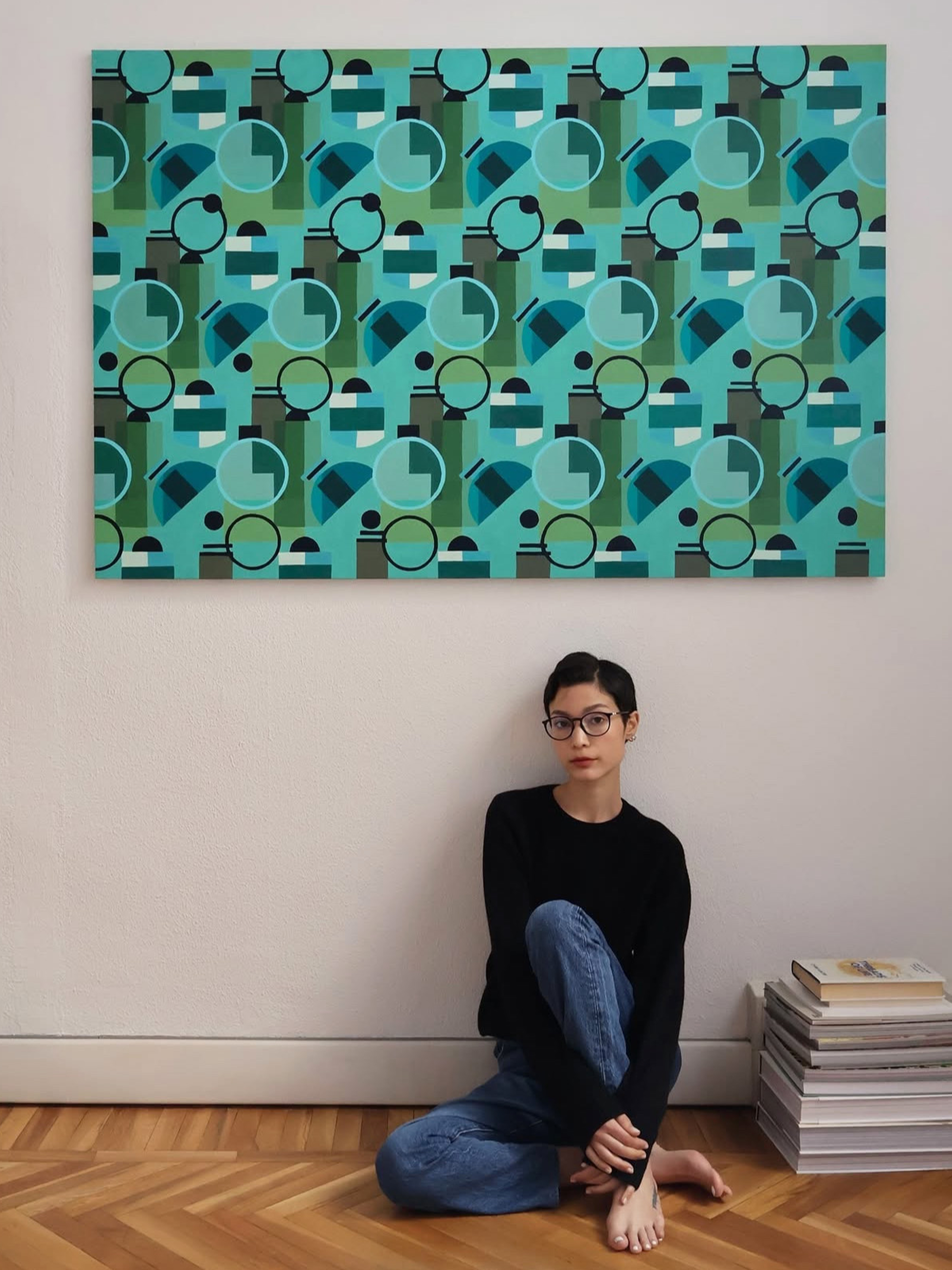I see beauty as something intimate and imperfect, more ritual than result. It lives in the way I prepare coffee, fold fabrics, arrange objects, or care for my skin in the quiet hours. These small, personal routines root me in the present. Beauty, for me, isn’t polished: it’s raw, quiet, and deeply felt. In my work, I try to preserve that feeling: the texture of a brushstroke, the unfinished edge, the trace of a hand. It’s about presence over perfection, holding space for what’s real.
